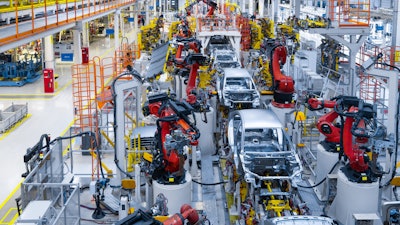
Global spending on digital transformation recently topped $1 trillion after years of double-digit growth. Investment in technologies such as artificial intelligence, machine learning, and data warehousing is skyrocketing because they promise to deliver sweeping improvements that directly impact the bottom line.
There is early promise of using industrial data at scale. The information is there with some basic use cases; however, most useful data remains siloed. This has been common knowledge for the past two decades, but the data is growing at such a pace that it should be considered an asset.
The applications of technologies for digital transformation are endless. Where they will have the biggest impact, however, is on one of the most consequential problems found in processes everywhere: bottlenecks.
Predictive analytics is a perfect example. By combining vast amounts of operational data with sophisticated machine learning capabilities, companies can now make informed predictions about future events. It doesn’t provide perfect foresight, but it does provide a marked upgrade compared to the vague forecasts companies currently rely on.
Improvement Starts by Eliminating Bottlenecks
Removing bottlenecks is easier said than done. Use these strategies to find more bottlenecks, remove them faster, and prevent them from returning:
1. Identify the type of bottleneck.
Bottlenecks can be caused by humans, machines, processes, or a combination of these components. The cause of the bottleneck determines its solution, so determining where the bottleneck is coming from is the first step. Human bottlenecks require training and supervision, whereas problems stemming from machines and processes are best remedied using automation and machine learning.
Small improvements can have a major impact. Amazon, for instance, developed an innovative program that expedites the amount of time it takes for truckers to check in at fulfillment centers. The new process might only save a few dozen seconds for each truck, but it ensures that the security checkpoint does not become a bottleneck that holds up the entire fulfillment process.
One thing you should be aware of is whether a bottleneck is a persistent problem or a one-time event. Some supply chain problems feel especially urgent, but once they’re resolved, they’re not a problem again — for example, when a normally reliable shipment is late. More important is focusing on recurring problems — like a shipment that is regularly late — because they have a long-term drag on the bottom line.
2. Empower human decision makers.
Just because eliminating bottlenecks is a systematic process doesn’t mean every decision needs to be debated in depth. Stakeholders throughout the supply chain should have the freedom to make small changes and improvements as they see fit (and within reason). Remember, bottlenecks can affect decision-making just as badly as they affect supply chains.
Don't rely on static models to understand something as fundamentally dynamic as a supply chain. Many intelligence tools aggregate data into a static series of metrics. By definition, that approach will fail to encapsulate all that is moving and changing within a supply chain. Focusing on how processes work (or don’t work) rather than how key performance indicators are trending helps companies identify more bottlenecks and their solutions.
3. Plan for long-term capital expenditures.
Removing bottlenecks can be expensive, and if the required funds are not available, companies can’t address the problem. Expenditures will likely be necessary over the short, medium, and long term, which can make capital forecasting and budgeting difficult. Tools like predictive analytics can give companies better visibility into the issues and more insight into how much they need to save in the coming years.
Thanks to predictive analytics, companies can answer previously impossible questions like “When is the perfect time to perform maintenance on a critical piece of equipment?” Applying statistical models to historical data helps companies understand the strengths and weaknesses in their systems. That way, they can engineer improvements that have a direct impact on efficiency, productivity, and profitability.
4. Understand the objective.
It’s relatively easy to make changes to a supply chain that boost the performance metrics minimally or temporarily, but this is not the same thing as actually removing bottlenecks. Shallow solutions don’t address the root problems and, as a result, allow bottlenecks to return. In bottleneck management, it’s easy to be misled by the numbers. Be sure the focus remains on the objectives that really matter.
Once the bottlenecks are removed, supply chains are more effective overall. They are also more receptive to future improvements. Because the supply chain is running as it should instead of in a compromised position created by bottlenecks, process engineers can begin to optimize throughput. The conditions exist for supply chains to evolve into their perfect state. Before that can happen, though, all the bottlenecks need to be systematically broken down.
In an increasingly competitive global economy, supply chain excellence is a significant advantage. The companies that choose to address their bottlenecks now will unleash their enterprises to transform for the future. Those that delay it are just creating an artificial bottleneck of their own design.
Ali Hasan Raza is the co-founder and CEO of ThroughPut Inc., the artificial intelligence supply chain pioneer that enables companies to detect, prioritize, and alleviate dynamic operational bottlenecks.























